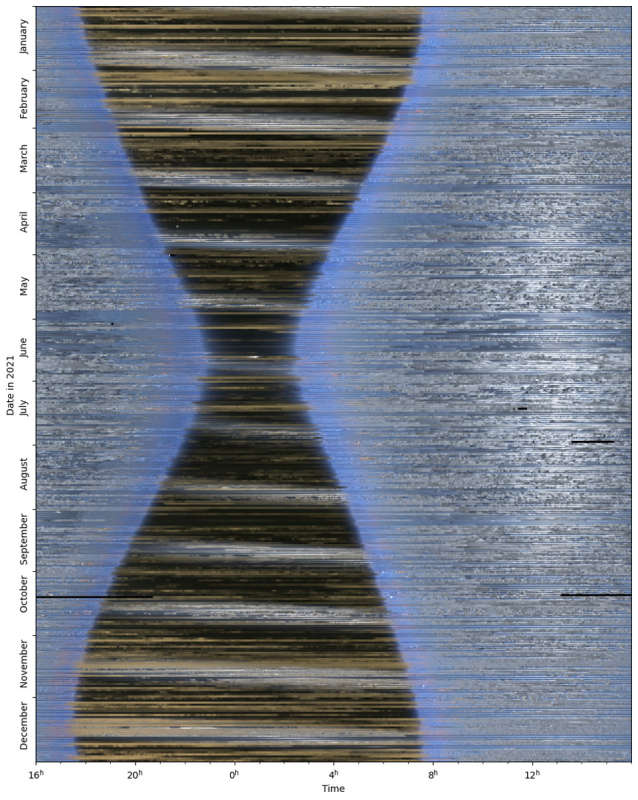Credit & Copyright: Cees Bassa
(Netherlands Institute for Radio Astronomy)
Explanation:
What if you could see the entire sky -- all at once -- for an entire year?
That, very nearly, is what is pictured here.
Every 15 minutes during 2021, an
all-sky camera took an image of the sky over the
Netherlands.
Central
columns from these images were then aligned and combined to create the featured
keogram, with January at the top,
December at the bottom,
and the middle of the night running vertically just left of center.
What do we see?
Most obviously, the daytime
sky is mostly blue, while the nighttime sky is mostly black.
The twelve
light bands crossing the night sky are caused by the
glow of the Moon.
The thinnest part of the black hourglass shape occurs during the summer
solstice when days are the longest,
while the thickest part occurs at the winter
solstice.
Yesterday was an
equinox -- when night and day were equal -- and the northern-spring
equinox from one year ago
can actually be located in the keogram -- about three-quarters of the way up.
Follow APOD on Instagram in:
English,
Indonesian,
Persian,
Portuguese or
Taiwanese
1999 2000 2001 2002 2003 2004 2005 2006 2007 2008 2009 2010 2011 2012 2013 2014 2015 2016 2017 2018 2019 2020 2021 2022 2023 2024 2025 |
Yanvar' Fevral' Mart Aprel' Mai Iyun' Iyul' Avgust Sentyabr' Oktyabr' Noyabr' Dekabr' |
NASA Web Site Statements, Warnings, and Disclaimers
NASA Official: Jay Norris. Specific rights apply.
A service of: LHEA at NASA / GSFC
& Michigan Tech. U.
|
Publikacii s klyuchevymi slovami:
sky - nebo
Publikacii so slovami: sky - nebo | |
Sm. takzhe:
Vse publikacii na tu zhe temu >> | |
